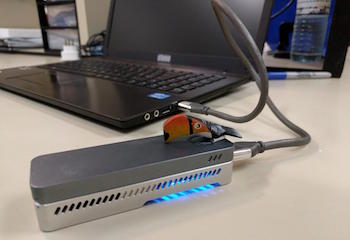You know how when you’re traveling you pick up post cards with every intention of writing them and sending them from your exotic location only to mail them out once you’re home? This post is kind of like that.
I’m writing this from my desk in Seattle, but I was in fact away… in Brazil! I had the incredible opportunity to spend two weeks sequencing Zika genomes from clinical samples with Josh Quick (of Ebola sequencing fame) and Sarah Hill from Oliver Pybus’ group. You might be familiar with the ZiBRA sequencing road trip that Trevor was a part of back in June. This was a follow-up trip with the goal of generating a lot more genomes with a newly optimized protocol.
Plans for this trip were hatched about three weeks before we all flew down, in a pub in Cornwall where I was for PoreCamp 2016. The vast majority of the logistical details were hashed out over Whatsapp. This type of planning for a pretty major trip seemed kind of crazy and unlikely to work, and yet it totally did. And really, kind of crazy but managing to work is a pretty good description of the trip in its entirety.
The good news first! Josh’s freshly minted protocol worked very well and we were able to sequence 20 genomes on the MinION with over 75% genome coverage (and some with as high as 98% genome coverage). 20 genomes might not sound like many but there were only around 90 genomes publicly available when we flew down, so proportionally this was a lot of information to get out of the trip.
Behind the scenes though we were riding a roller coaster of success and issues, and given that our experiences are probably pretty typical of outbreak sequencing in the field, they warrant some description. We started off in Salvador, where all the RNA extracted during the road trip had been stored. The first major issue we had to deal with was managing contamination. With 45 cycles of PCR needed to amplify sufficient Zika cDNA for sequencing, we were pretty concerned about keeping amplicons away from any RNA yet to be reverse transcribed. This pre- and post-pcr separation was a little more challenging in our Salvador lab, which had a single thermal cycler (we have a two-step PCR protocol) and no separated lab spaces. We ended up turning a biosafety cabinet into our pre-pcr area, complete with a tiny 8 tube thermal cycler that we ran off of a battery pack and programmed using Josh’s computer. Given that we could UV the whole setup after every run this actually worked extraordinarily well and despite so many rounds of amplification we had clean negative controls.
As we processed more and more samples we realized that there didn’t seem to be as sharp of a relationship between Ct and sequence-ability as we were expecting. Josh figured that RNA degradation was likely to blame for this, as the samples had probably experienced some freeze-thaw during their transportation along the coast of Brazil. There wasn’t much that could be done about the degradation at this point, but it did mean that we tried to work as much as possible from fresh extractions in São Paulo.
Another hurdle was ensuring that we had complete epidemiological data for the samples we sequenced. Trevor described some of the challenges with wrangling metadata on the road trip, but in the end all that work meant that the metadata was pretty complete for the samples in Salvador. This was more of a problem in São Paulo, where samples had been received by multiple people, in multiple labs. There really isn’t much to say here except you’ll probably need to be pretty dogged in your pursuit and you’ll probably feel like a bit of a nag. However, the inferential worth of the sequences drops a lot when the associated epidemiological information isn’t available, so it really is worth the sweat and tears to hunt it down.
So tl;dr. Thinking of doing some outbreak field sequencing? Awesome, if you can get a good team together it will be a lot of fun (dare I say a sequencing vacation?). Be prepared to be resourceful and creative, to constantly troubleshoot, and to cross your fingers a lot. Try and have fresh RNA, battle to make the lab as clean as you can, and work hard to verify and manage your metadata.
